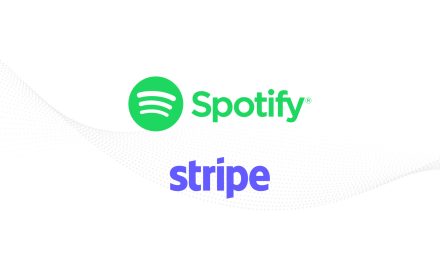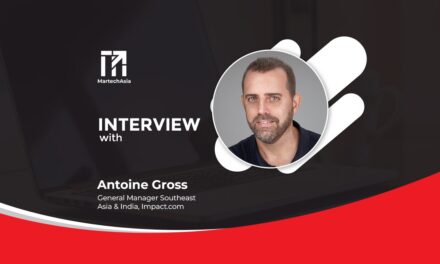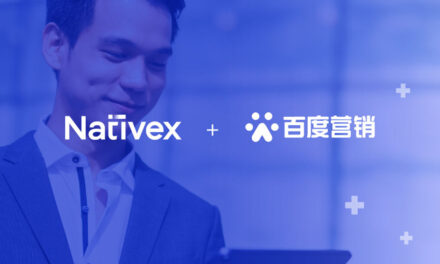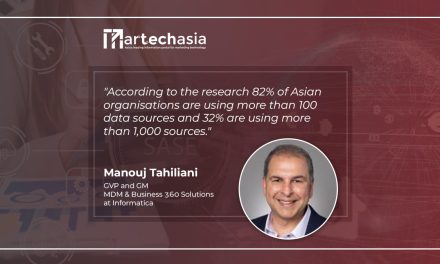Upskilling to build financial fluency and to leverage generative AI key reasons for market optimism.
LinkedIn recently unveiled its 2024 B2B Marketing Benchmark report at the Cannes Lions International Festival of Creativity, offering new insights on what’s driving US$18 trillion of B2B purchases globally.
It also demonstrated tools and insights to help B2B marketers reach and engage the buyer group and build “collective confidence” among decision-makers, and unveiled The B2B Institute, in partnership with Bain & Company.
MartechAsia caught up Matt Tindale, Head of Enterprise, APAC, LinkedIn Marketing Solutions, to gain further insights around how the B2B marketing landscape in Aisa Pacific is evolving.
In LinkedIn’s recent 2024 B2B Marketing Benchmark report, 74% of APAC B2B marketers expect budgets to increase in the next 12 months. What do you think is the cause for this optimism amid current VUCA market sentiments?
Matt Tindale (MT): Optimism is returning to B2B as brands are looking to invest in advertising to stay top of mind among buyers. In fact, our report found that 9 in 10 B2B marketing leaders in APAC are bullish on their team’s ability to drive revenue in the year ahead as they adapt to the evolving market.

A key reason for this optimism is that B2B marketers have upskilled to build financial fluency, which has helped them make the case for more budget to invest in brand building. They are intensifying brand building activities by identifying new audience segments, improving memorability and enhancing campaign performance.
Furthermore, as AI continues to evolve, companies are leveraging these advancements to boost productivity, elevate content creation, create cost efficiencies, and enhance their B2B marketing strategies. It is clear they recognise it as a crucial investment to gain a competitive edge in the long run.
More and more organisations are leveraging generative AI in their marketing activities, and AI is the fastest-growing digital skill for CMOs globally. What are your perspectives on this trend, and what marketing outcomes should we expect to see from this development?
MT: AI is quickly emerging as a significant tool in the B2B marketer’s toolbox. LinkedIn’s data reveals a 142x increase in members worldwide adding AI literacy skills to their profiles, with marketers in particular leading the charge on AI adoption and building AI proficiency to improve ROI. The top two ways B2B marketers plan to use generative AI this year is by increasing efficiency to focus on higher value work (55%) and creating optimised and engaging content that resonates with target audiences (51%). In APAC, B2B marketing leaders are leveraging generative AI applications to improve productivity (41%), and create cost efficiencies (33%).
The ability to leverage AI will no longer be a good-to-have, but rather a necessity for marketers. Already, the technology is optimising campaigns and targeting, and streamlining day-to-day tasks to free up time for creative thinking. For instance, the new functionalities that LinkedIn has introduced in Accelerate, our AI-driven campaign creation and optimisation tool, allow marketers to use Microsoft Designer to build engaging creatives, enhance targeting, and receive campaign creation guidance with the help of an AI assistant.
What should marketers take into consideration when setting out to build “collective confidence” among buyer groups to ensure B2B marketing success?
MT: The majority (91%) of B2B CMOs in APAC agree that influencing purchasing decisions is dependent on cultivating strong relationships. They know that success in B2B marketing is really about building “collective confidence” among the buyer group, including decision-makers and brand advocates.
B2B buying cycles tend to be long and emotion-driven, requiring an average of 17 meaningful interactions with a company to successfully complete a purchase – which underscores the importance of cultivating meaningful relationships. Investing in brand building can help companies improve memorability among the buyer group and positively influence purchasing decisions.
Creativity is also essential to creating confidence in a brand. Our report found that nearly three-quarters (74%) of B2B marketing leaders in APAC have focused on developing bolder creatives, with 62% agreeing that this approach is improving brand engagement and driving conversions.
What else can be done to improve brand engagement and drive conversations in APAC?
MT: The ability to blend creativity with emotional brand-building is key to driving effective campaigns that address customer needs and challenges, as well as bolster engagement and conversations.
A case in point is Salesforce’s use of high-profile personalities and innovative media formats such as connected TV. Their latest ad on YouTube TV, ‘The Great Data Heist’, featured Matthew McConaughey and employed suspenseful cinematic visuals while touching on data management and security, a pain point for CMOs when it comes to AI adoption. By combining bold creative elements with a clear focus on customer concerns, Salesforce enhanced brand engagement and conversions.
In addition, B2B marketers should align brand messages with trusted publisher content in a format that resonates with buyers, in order to support memory recall. This is crucial since only 5% of B2B buyers are in the market for a new purchase at any given time.
To help marketers, LinkedIn has introduced the Wire Program to enable brands to promote in-stream video ads alongside trusted publisher content on LinkedIn. With video as a fast-growing platform with a 45% year-over-year increase in uploads on LinkedIn, we’re helping marketers reach buyers as they increasingly consume the medium.


















